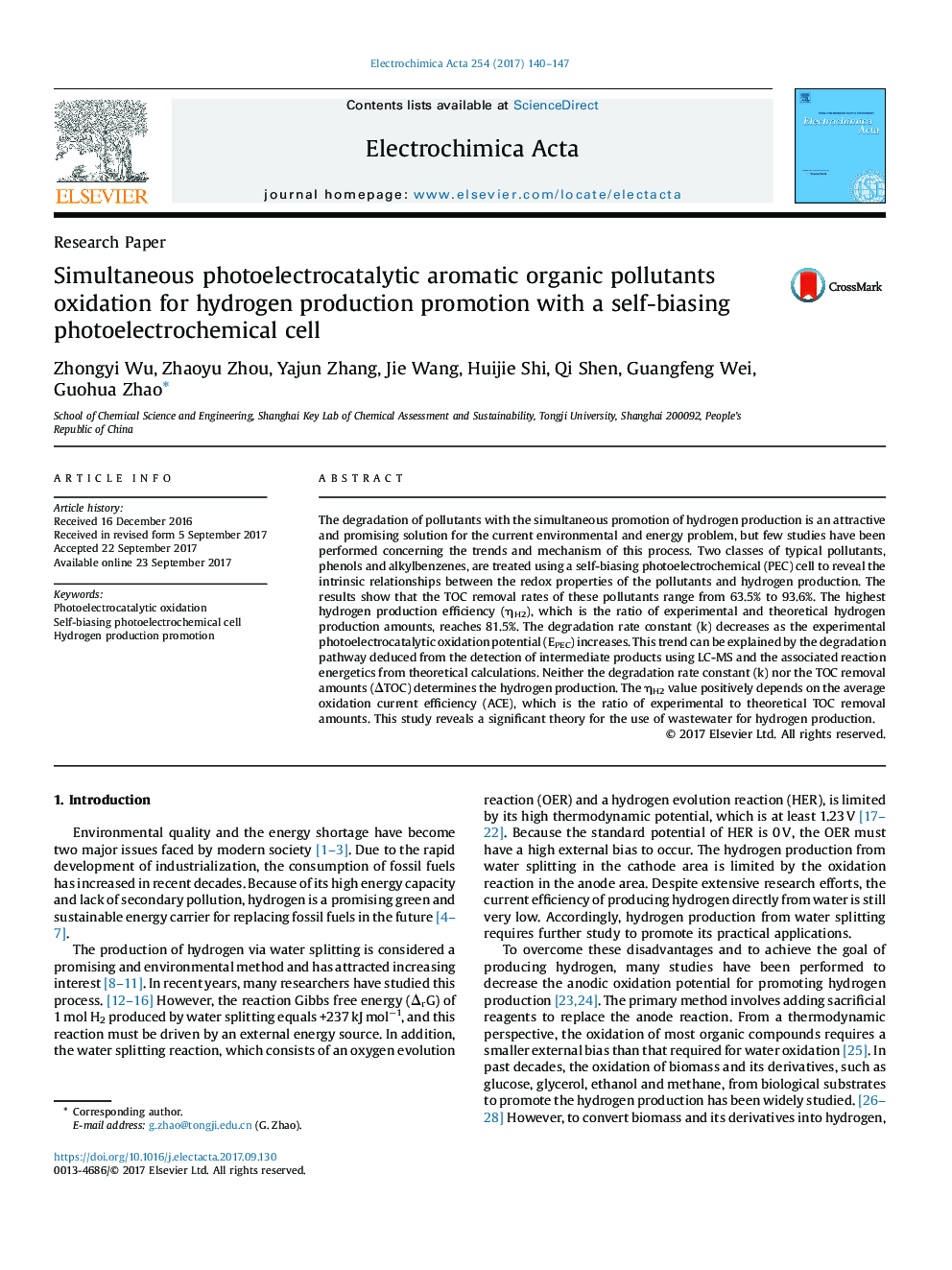| Article ID | Journal | Published Year | Pages | File Type |
|---|---|---|---|---|
| 6469797 | Electrochimica Acta | 2017 | 8 Pages |
â¢A novel self-biasing photoelectrochemical (PEC) cell is constructed.â¢The PEC cell is used for simultaneous pollutants degradation and H2 production.â¢The highest hydrogen production efficiency is 81.52%.â¢Degradation rate constant (k) decreases as oxidation potential (EPEC) increases.â¢The ηH2 positively depends on the average oxidation current efficiency (ACE).
The degradation of pollutants with the simultaneous promotion of hydrogen production is an attractive and promising solution for the current environmental and energy problem, but few studies have been performed concerning the trends and mechanism of this process. Two classes of typical pollutants, phenols and alkylbenzenes, are treated using a self-biasing photoelectrochemical (PEC) cell to reveal the intrinsic relationships between the redox properties of the pollutants and hydrogen production. The results show that the TOC removal rates of these pollutants range from 63.5% to 93.6%. The highest hydrogen production efficiency (ηH2), which is the ratio of experimental and theoretical hydrogen production amounts, reaches 81.5%. The degradation rate constant (k) decreases as the experimental photoelectrocatalytic oxidation potential (EPEC) increases. This trend can be explained by the degradation pathway deduced from the detection of intermediate products using LC-MS and the associated reaction energetics from theoretical calculations. Neither the degradation rate constant (k) nor the TOC removal amounts (ÎTOC) determines the hydrogen production. The ηH2 value positively depends on the average oxidation current efficiency (ACE), which is the ratio of experimental to theoretical TOC removal amounts. This study reveals a significant theory for the use of wastewater for hydrogen production.
Graphical abstractDownload high-res image (91KB)Download full-size image
